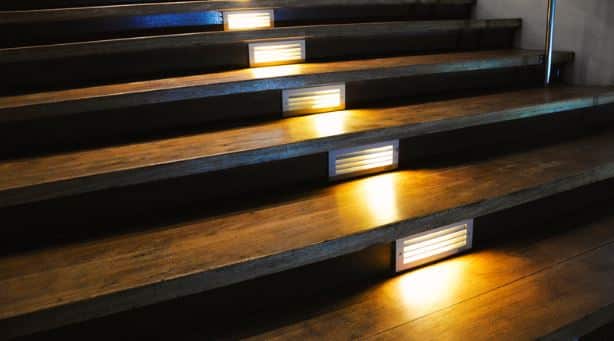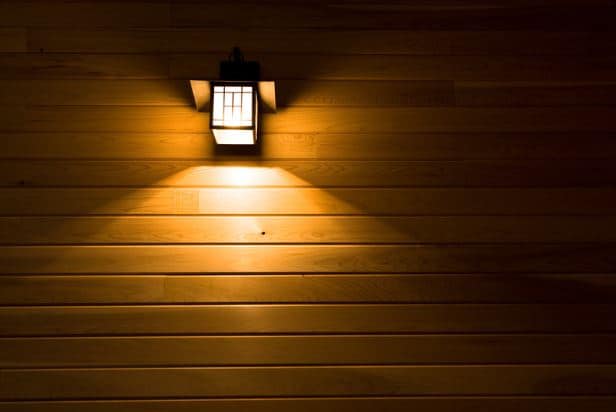Enhancing your home’s curb appeal goes beyond just a fresh coat of paint or a well-manicured lawn. One of the most transformative yet often overlooked elements is landscape lighting. Properly installed outdoor lighting does more than just brighten up your garden; it highlights your property’s best features, enhances security, and significantly boosts your home’s market value. Whether you’re planning a complete overhaul or just looking to add some accents, understanding the different types of landscape lighting and how to use them effectively can make all the difference.
5 Types of Landscape Lighting
1. Path Lights: These are designed to illuminate walkways and garden paths. Not only do they provide safety by guiding visitors to your home, but they also add a welcoming touch to your outdoor spaces. Path lights are typically low to the ground, casting a soft glow that creates a beautiful, inviting atmosphere.

2. Spotlights: Ideal for highlighting specific features such as trees, sculptures, or architectural elements, spotlights can add a dramatic effect to your garden. By focusing light on particular points of interest, spotlights create depth and draw attention to the focal points you want to showcase.

3. Flood Lights: If you’re looking for general illumination for large areas, flood lights are your best bet. They are particularly useful for enhancing security, as they can cover a broad area with bright light. Flood lights are perfect for illuminating driveways, large lawns, or the exterior of your home.

4. Step Lights: Safety and style go hand in hand with step lights. These lights are installed on stairways and steps to prevent accidents and improve visibility. They can also add a touch of elegance, highlighting the architectural elements of your stairs and walkways.

5. Wall Lights: Mounted on walls, these fixtures accentuate textures and architectural features, adding dimension and interest to your home’s exterior. Wall lights can be used to highlight unique elements of your house, such as stonework, brick facades, or decorative wall features.

Planning Your Landscape Lighting
Assess Your Needs: Begin by evaluating the areas of your property that need illumination. Consider factors like safety, aesthetics, and functionality. Think about which parts of your garden or home you want to highlight and how you want to use the space after dark.
Choose the Right Fixtures: Selecting fixtures that complement both your home’s style and the natural landscape is crucial. opt for designs and materials that blend seamlessly with your outdoor décor and enhance the overall look of your property.
Decide on a Layout: Plan the placement of each type of light carefully. An effective layout will balance illumination with shadow, creating a visually appealing and functional lighting scheme. Consider using a combination of different types of lights to achieve the best results.
Installation Tips
Measure and Mark: Accurate placement is key to a successful installation. Measure and mark the locations for each fixture before you begin. This will help ensure that your lighting is evenly distributed and achieves the desired effect.
Install the Fixtures: Follow the manufacturer’s instructions closely during installation. Make sure all connections are secure to prevent any electrical issues or safety hazards. If you’re unsure about any part of the process, consult a professional.
Test the System: Once everything is installed, test your lighting system to ensure that all fixtures are functioning correctly and that the overall effect meets your expectations. Adjust as necessary to fine-tune the lighting scheme.
Cost Considerations
The cost of installing landscape lighting can vary widely depending on the type of fixtures you choose, the complexity of the installation, and the size of the area being lit. On average, homeowners can expect to spend between $2,000 and $4,000 for a professional installation, including both materials and labor. If you’re inclined to tackle the project yourself, you might save money, but be prepared for the challenges if you lack experience in electrical work.
When to Call a Professional Electrician
For those who are not comfortable with electrical work or face complex wiring challenges, hiring a professional electrician is highly recommended. A professional can ensure that your installation meets local code requirements and is completed safely. Moreover, they can offer valuable advice on optimizing your lighting setup to maximize your home’s value and aesthetic appeal.
Quick Statistics
ROI: Well-designed landscape lighting can increase your home’s value by up to 20%. This significant return on investment highlights the impact that quality lighting can have on your property.
Installation Costs: Professional installation costs generally range from $2,000 to $4,000, depending on the scope and complexity of the project.
By investing in thoughtful and well-executed landscape lighting, you’re not only enhancing the beauty and safety of your home but also making a smart financial decision. Illuminate your property’s potential and enjoy the lasting benefits of a well-lit home!




